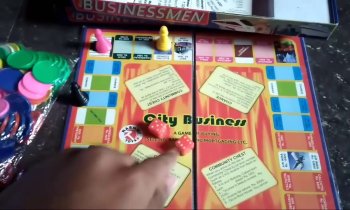A keyboard can significantly improve your life, whether you use it for business, to complete projects, or to play challenging online games.
Though it's a fascinating possibility, creating your keyboard might be scary.
Check out the post for a step-by-step tutorial on creating a unique keyboard to make the procedure as simple and perfect as possible.

To Build a Custom Keyboard, You Will Need:
- A keyboard case
- PCB suitable for that case
- mount for switches
- switch mechanisms
- Stabilizers
- Keycaps
- cable USB
- Screwdriver \sTweezers
- iron and solder for soldering (not required for hot-swap keyboards)
And Useful Add-Ons:
- switch and keycap removal
- Stabilizing pads or fabric bandages
- snippers or flush cutters for the nails
- Dielectric grease that is semi-thick, such as Permatex.
- switch lubricant (Krytox 205g0 is a safe bet)
- Accurate paintbrush
- Alternate films
- Material for neoprene damping
Instructions for getting started with a custom keyboard:
1. Plan your spending:
Before starting your search for the desired parts, like with any other purchase, you must choose how much you are willing to spend on your custom mechanical keyboard.
Depending on the quality you choose, the features you want, and the popularity of a certain brand or part, mechanical keyboard prices can range from RM64.90 to RM589 and above.
2. Pick a keyboard size:
The fact that keyboards exist in a range of sizes is one of the most entertaining features. You will need to choose the best one for you, though, so bear that in mind. And now for the sizes:
- Full-size keyboards have 104 keys.
- 80% are equipped with everything but the number pad.
- A tenkeyless keyboard with 75% is a little more compact design.
- 60% removes the function row, arrow keys, and number pad.
3. Choose a keyboard case style:
Casings are a crucial component of keyboards since they serve as the connecting link between all the other sections. It also enhances the keyboard's aesthetic appeal.
- Plastic: Plastic cases have the advantages of being inexpensive and lighter in weight.
- Aluminum: Compared to plastic cases, aluminum cases are more durable. They might, however, be rigid and unyielding.
- Acrylic: Acrylics are rather fragile but very easy to look at because they have a plastic casing with glass elements inside.
- Stainless steel: These cases are usually quite strong and hefty, and they are even stronger than aluminum cases.
- Wood: The most unusual form of keyboard cases are wooden ones; the quality of these cases relies on the kind of wood and the way it is processed.
4. Choose the switches:
The key to creating a keyboard that works best for you is choosing the appropriate switches, as they greatly influence how you type in general.
- Linear: For individuals who only need the "basic" keystrokes, linear switches are incredibly simple yet still provide a dependable and pleasurable typing experience.
- Tactile: Compared to linear switches, tactile switches offer a more distinct sense of touch; yet, they are not as loud as clicky switches.
- Clicky: Depending on whether you want your typing to be audible, clicky switches—which have a rough sensation and a click sound—will either make you love them or loathe them.
5. Make sure to purchase the proper stabilizers for the large keys:
Keyboard stabilizers keep your larger keys in place while you type, preventing them from shaking or rattling while you type.
The spacebar, shift, or backspace keys can be used as these. They are put close to the switches on the keyboard.
Now that you have all the components ready, move to the next part.
1. To Ensure Function, Test the PCB:
Once you've selected the PCB you choose, you must check it by connecting it to your computer and using tweezers to test each switch.
You can check the PCB to make sure there are no problems and that everything functions as intended right out of the box.
2. Lubricate your switches:
Currently would be an excellent time to lubricate your switches.
In essence, each switch needs to be disassembled to lubricate the lower housing, spring, stem, and upper housing. Many advantages come with it, such as fewer spring ping noises, fewer scratchy keystrokes, smoother keystrokes, and better sound.
3. Modify your stabilizers:
Modifying your stabilizers is a further optional step. Your stabilizers' sound and feel can be significantly improved with a few simple adjustments.
Simply apply lubricant to the stabilizers, remove the little feet from the bottom of the stabilizers, and lay a thin bandage strip where it will contact the PCB.
As you will be inserting the stabilizers into the PCB in the following phase, now would be a wonderful time to do this.
4. Insert stabilizers into the PCB:
To ensure proper placement of the stabilizers, position them in the appropriate locations.
Take your time during this stage because moving the stabilizers again will be considerably more challenging once the switches are placed and soldered.
5. Place Switches on Plate and PCB:
The location of the switches needs to be planned now. The switches must be pressed into the plate for the pins to enter the PCB.
The pins are quite prone to bending during installation. If so, use tweezers to re-straighten them before trying again.
Additionally, now is the time to check that all of the switches are in their proper locations if you're going for a split spacebar or any other unconventional arrangement.
6. Solder Switches:
Make sure you are in a well-ventilated place, work through each switch, and solder the two metal pins to the PCB.
You should also have all the necessary tools on hand. Make sure to restest the whole thing.
A great technique to learn how to solder and desolder and practice creating beads of the right size is to solder a may pad, if you never did soldering before.
7. Fill the case's feet with foam and rubber:
To fit within the case, you must cut the foam into separate pieces. Get rubber feet to go with the case as well (unless they are pre-installed).
Place the feet before adding the foam, this is an excellent moment to do it.
As it enhances the acoustics and eliminates spring ping noises, adding foam is an optional step.
8. Place the Assembled PCB in the Case:
This step may alter depending on the mounting method used for the case.
The majority of the time, assembly simply entails putting the PCB into the case, however, your keyboard should come with some straightforward assembly instructions.
The PCB needs to be centered inside the enclosure and completely stable after installation.
9. Set up the Keycaps:
Everything starts to make sense when you look at the keycaps. It's an interesting and comparatively easy technique.
Your build is now finished after the keycaps have been inserted. There is only one more important step left to take.
10. Testing Your Typing:
You should now test drive your personalized keyboard. Start typing on your preferred typing test and observe how much better you are getting.
You can also use tools like keyboardtester.io to make sure your custom keyboard is working properly or not.
Frequently Ask Questions (FAQs)
Q1. Is making a custom keyboard easy?
Ans: The process of creating your first bespoke mechanical keyboard can be rather intimidating.
Q2. Is building custom keyboard expensive?
Ans: In all likelihood, you should be prepared to shell out between $200 and $400 for a custom keyboard.
Q3. Is it better to buy or make a keyboard?
Ans: It won't save you money, but you will get a keyboard customized to your specifications. Therefore, you should only create a keyboard if it has a set of features that a pre-built keyboard doesn't have.
Q4. How long does it take to make a custom keyboard?
Ans: From 4 - 15 days, as per your choice of components to buy and get prepared with all of the items to install.
Q5. What is 40% keyboard?
Ans: As a specialized keyboard, it does without the number row, arrow cluster, and frequent punctuation keys.
Conclusion:
Making a custom keyboard may seem difficult, but you can do it by ordering each of the parts (keyboard case, PCB, plate, switches, keycaps, USB cord) individually and putting them together.
By doing this, countless possibilities for modifying a keyboard's size, shape, sound, and feel are made possible.













Comments